Customers waiting for stores to open, markets selling out and billions of dollars in free advertising via news coverage highlighted a session about the WA 38 apple in one session on the concluding day of the Washington Tree Fruit Association Annual Meeting in Wenatchee.
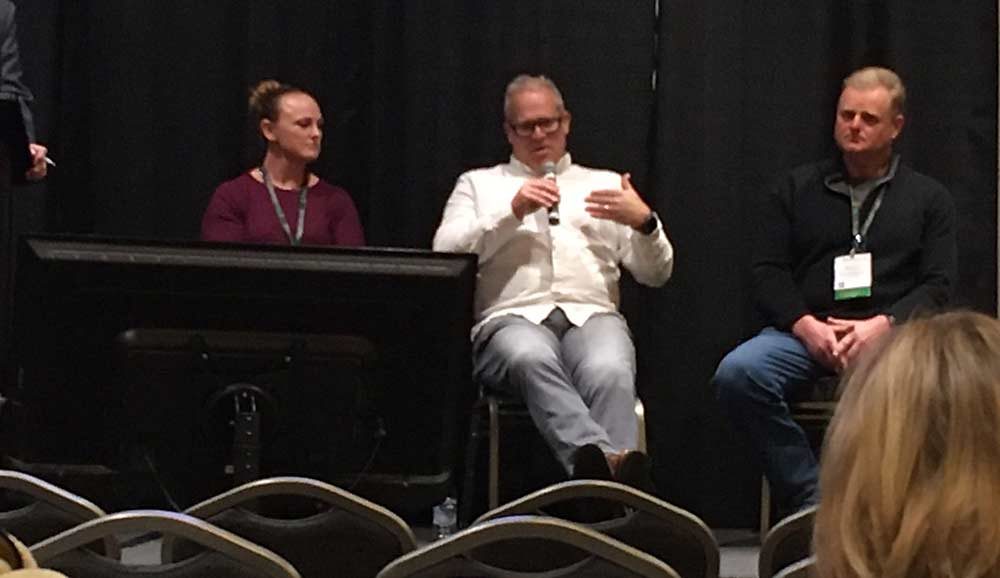
“A star was born,” said Lynnell Brandt, president of Proprietary Variety Management, a Yakima company contracted by Washington State University to commercialize the WA 38, which carries the trade name Cosmic Crisp. The first commercial sales began Dec. 1 for the apple, which will rapidly become one of Washington’s top varieties in the coming years.
Royalties, legal challenges, research updates and a panel of growers made up the morning Cosmic Session topics.
The university has collected a total of $4.4 million in tree royalties since growers in Washington began planting in 2017 and projects another $2.6 million this year, said Scott Hulbert, associate dean for research. That sounds like a lot, Hulbertsaid, but half of the money goes to the breeding program to continue work. Meanwhile, the university has to pay for marketing and legal protection for intellectual property, meaning the fund will be in the red until 2021.
WSU spent $593,000 in 2018 to hire outside attorneys to investigate and sue growers propagating the WA 38 outside the license agreement, said Albert Tsui, business development specialist and a patent attorney for WSU. He expects that figure to top $1 million in 2019 and go up in subsequent years.
“You need to defend your turf, and that’s what we have done,” Tsui said.
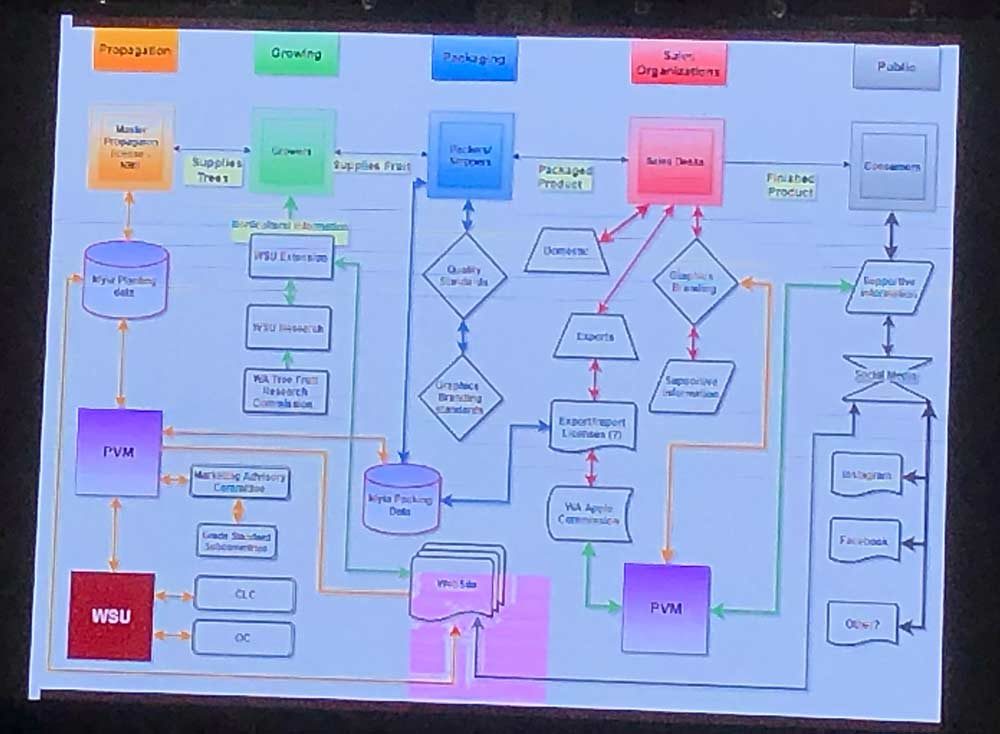
Meanwhile, news coverage and social media chatter about the Cosmic Crisp added up to $47.6 million in free advertising, according to a media tracker used by Proprietary Variety Management.
Researchers gave several updates to WA 38-related projects during the session.
Carolina Torres, a postharvest specialist at WSU, determined that the apple’s average packout was 78.3 percent. Limb rub was the most common cull reason, accounting for 22 percent of all culls over all the packing houses she visited. Green spot followed at 16 percent.
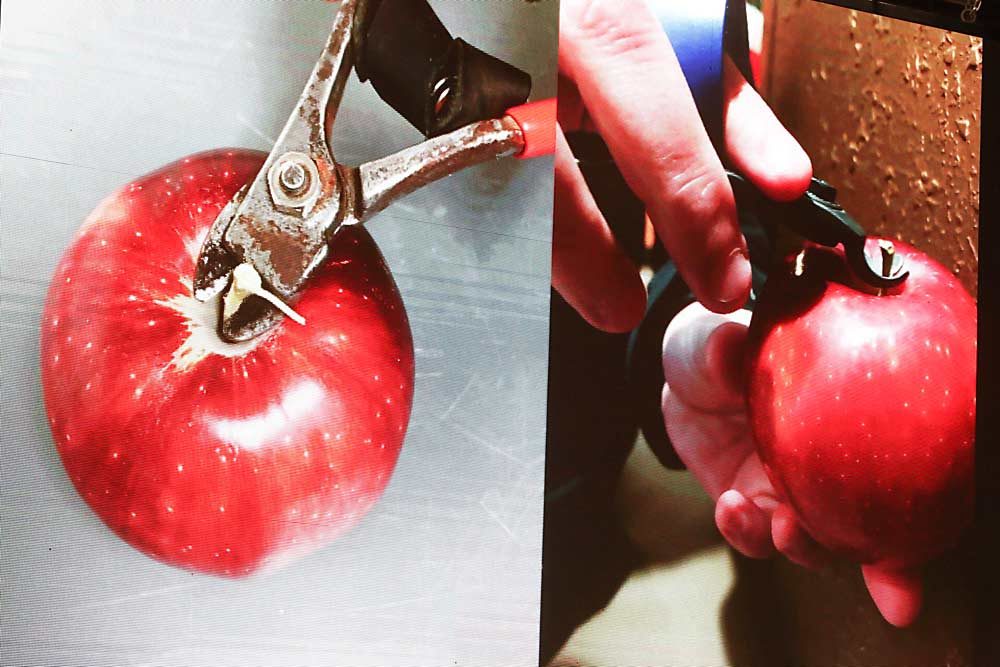
WSU’s Stefano Musacchi and his Wenatchee laboratory team gave updates on trials with Apogee, dry matter as a measure of fruit quality and pollination timing, while Bernardita Sallato discussed green spot studies, drape net trials and rootstock comparisons. The session concluded with a panel of four growers.
In the Integrated Pest Management session, hot topics included promoting natural enemies to boost pear psylla control, the challenges of trapping the transient brown marmorated stink bug, and new tools to evaluate whether your codling moth control program is hitting the mark in terms of timing.
WSU’s Tianna DuPont and Louie Nottingham shared their findings from the past several years of work on improved pear IPM. DuPont said organic and IPM programs that protect natural enemies both offered more effective control of late-season psylla than did conventional programs, because the natural enemies keep the population in check.
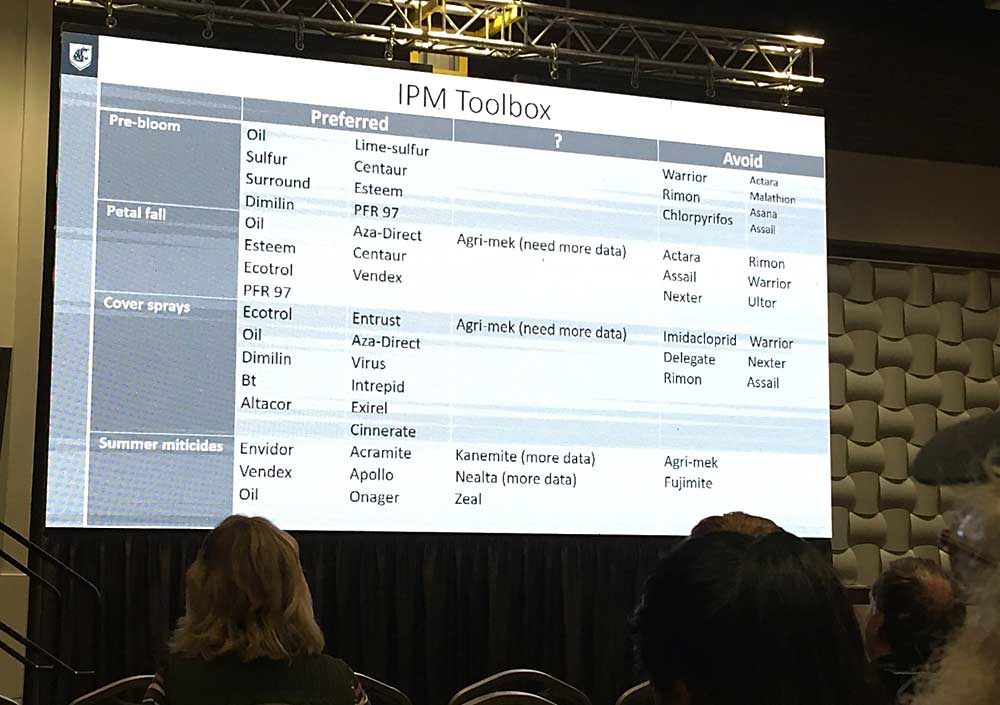
Nottingham’s research focuses on cultural controls that can help growers manage psylla and the use of deterrents such as Surround and reflective mulches. “What we are finding is that if you get good spray coverage with Surround, the insecticides aren’t really necessary” in the spring, he said.
He also promoted systems that wash honeydew off the trees, which reduces the fruit damage in IPM programs, even if they have higher psylla populations than conventionally managed blocks.
Entomologist Vince Jones, who runs WSU’s Decision Aid Support systems to provide weather-dependent models to guide spray timing, presented a new tool that evaluates how your previous codling moth control program aligned with the ideal timing.
“We’re trying to make sure you are putting on these insecticides at the right time,” he said, showing a chart measuring the lost efficacy from each day of deviation from the optimal timing. “You are losing $90 an acre with an application 10 days out from the optimum timing.”
In a single orchard case study Jones shared, using horticultural oils at the optimum timing provided better and cheaper codling moth control than the expensive Entrust (Spinosad) program the grower had been using.
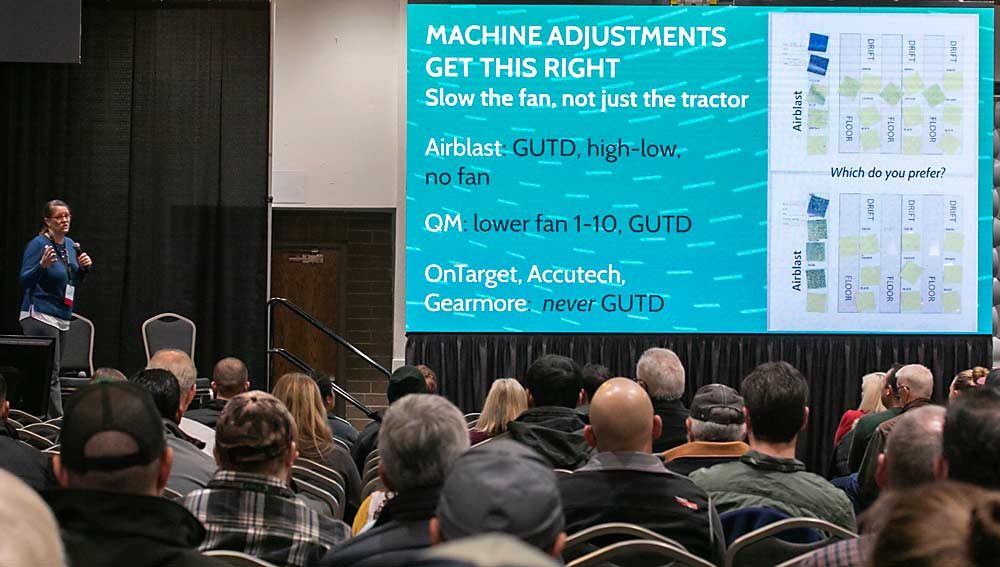
But when it comes to brown marmorated stink bugs, precise timing of sprays isn’t an option. Oregon State University entomologist Nik Wiman shared findings from trials the past two years that aimed to correlate trap catch with fruit damage in Oregon pear, cherry and hazelnut blocks. Pest damage is now requiring management in Oregon, but the concern is that putting on biweekly covers of pyrethrins, the best available management for BMSB, will wreak havoc on existing IPM.
Unfortunately, “there seems to be a disconnect between BMSB feeding and the trap catch, especially for the early season crops such as cherry,” Wiman said. “Bringing a pheromone lure into the orchard can increase the damage in the vicinity of the trap. It’s better to put it in your neighbor’s orchard, probably, or in native vegetation.”
That last line got some laughs, but lots of questions remain about how best to manage BMSB. There’s great hope for the tiny parasitoid samurai wasp, which is establishing in many areas where BMSB has made itself at home, but it’s highly susceptible to insecticides and has not yet been found to successfully parasitize egg masses in Oregon orchards, Wiman said.
—by Ross Courtney and Kate Prengaman
Related:
—Harvest of Cosmic proportions
—DuPont: Moving toward bio-based IPM in pears
—Sustainable and less sticky solutions for pear psylla
—BMSB is still raising a stink






Leave A Comment